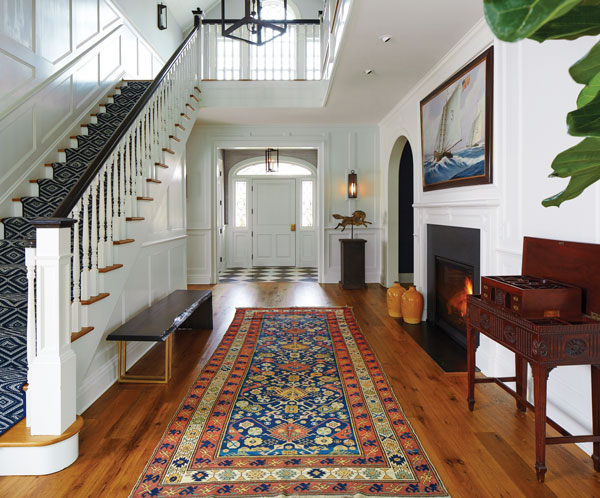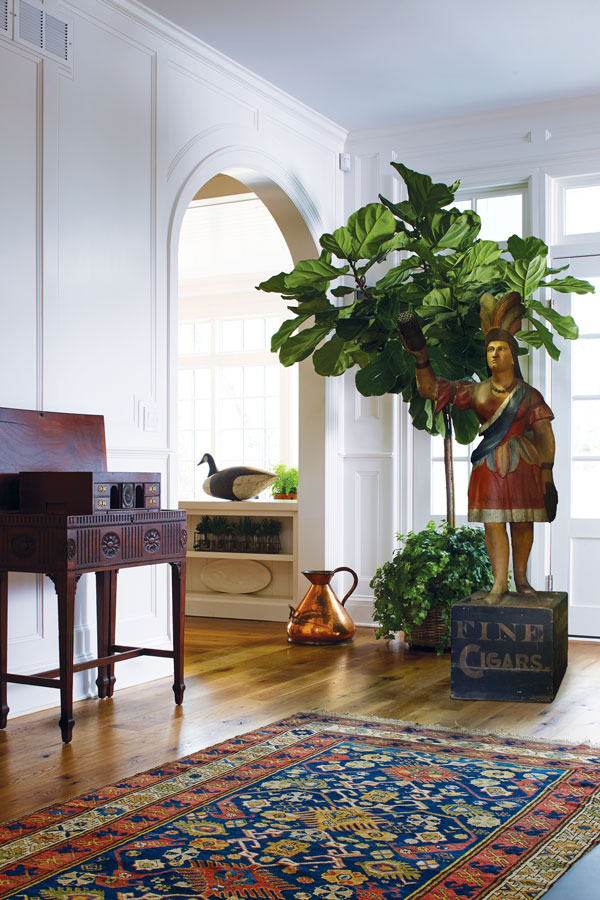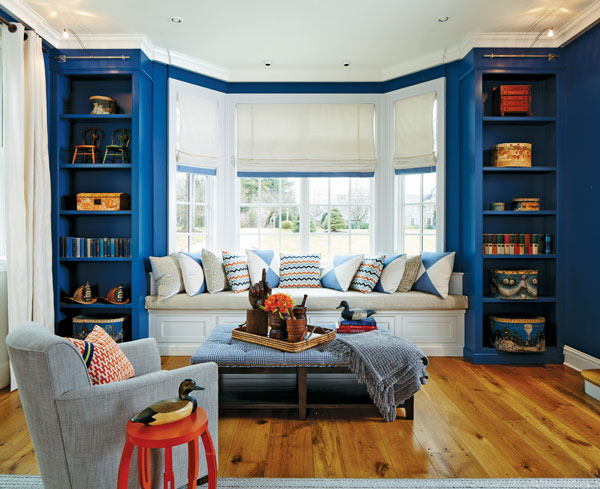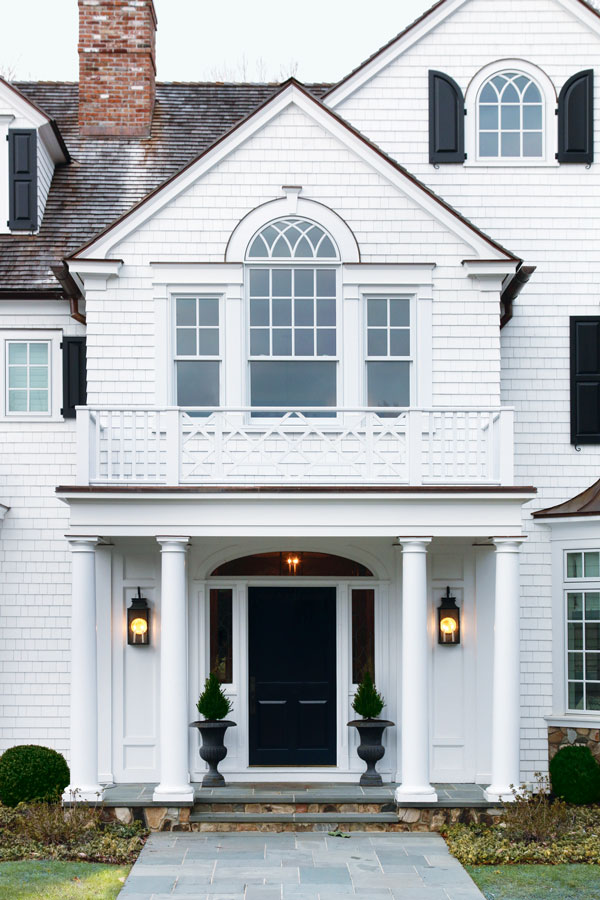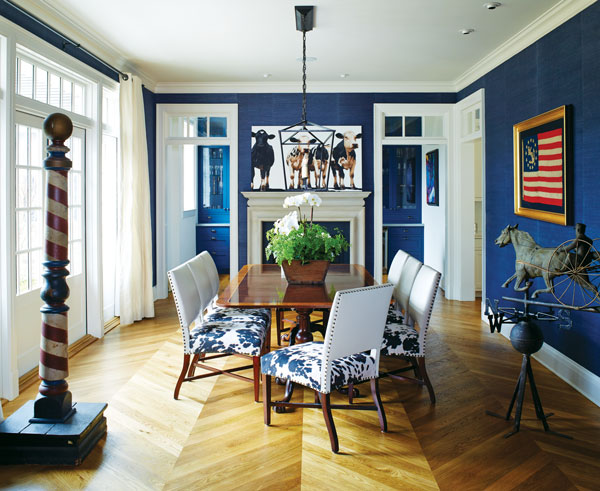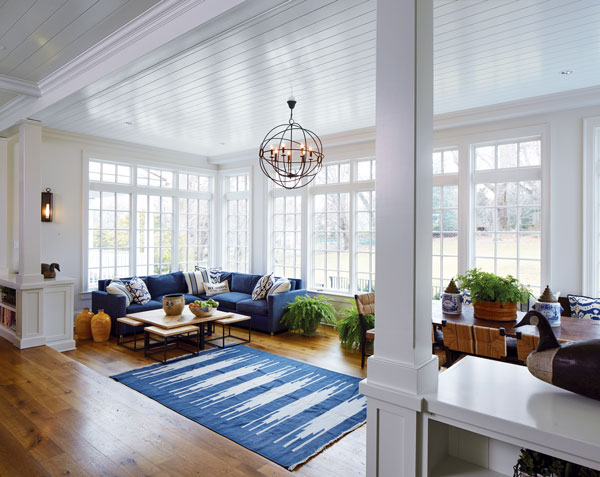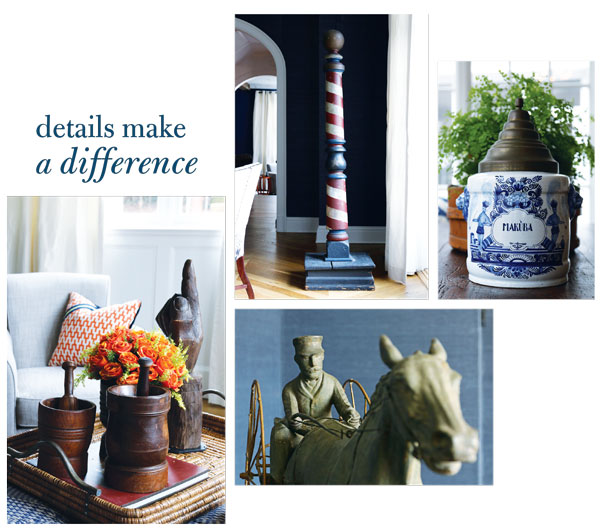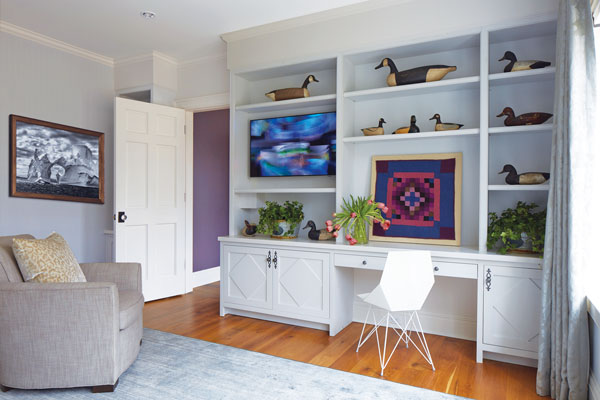A Sense of Place
Writer Robin Amster | Photographer Phillip Ennis | Designer Barbara Goldfarb | Architect Anderson Campanella Architects | Location Rumson, NJA designer incorporates antiques into a contemporary home, creating a unique space linked to our historic past.
In our disposable age when the “new” is almost always considered good and many historic houses have been lost to the wrecking ball, antiques can play an ever more important role in our homes.
“They give a house a sense of place, make it unique, give it a personality,” says Barbara Goldfarb, an allied member of the American Society of Interior Designers and owner of Little Silver, New Jersey-based Design Logic Ltd. “Using antiques reflects a desire to bring our history into our present. Antiques also give children a window into the history of American culture.”
Goldfarb, who founded and managed the Two Rivers Antiques Show for 17 years and is a collector in her own right, says, “My philosophy is to inspire the next generations not to lose site of the wonderful history and culture that brought us here.”
The designer found the perfect opportunity to put that philosophy into practice with her design of a home located in Rumson, NJ for a young family. Her idea: to demonstrate the value of antiques by incorporating them into the couple’s contemporary home. “I had recently worked on this project but it wasn’t complete and I knew the owners loved Americana,” Goldfarb says.
So the designer worked with Joseph Hammond, curator of the Monmouth County Historical Society, and Kara Short, a trustee of MCHA and former co-chair of the Two Rivers Antiques Show, to borrow several pieces from its collection to place throughout the home. “The MCHA was happy to show off some of its iconic pieces,” Goldfarb says. And because several pieces she wanted to select were unavailable, she and Short contributed some antiques from their own collections.
A New “Historic” Home
The backdrop for the antiques is a fitting one. Goldfarb says the homeowners, originally from Bucks County, Pennsylvania, have an appreciation for historic homes. While many homes in the Rumson area are gray shingle-style houses, the couple wanted something different.
Their new 8,000-square-foot home was built in 2014, but it was designed to look like a historic structure. Using images selected by the homeowners, Anderson Campanella Architects of Rumson designed a Federal-style home with a classic exterior and a spacious, light-filled interior ideal for this active young couple and their three children and two dogs.
Goldfarb selected mostly primitive antiques—primarily American, French, Italian and English—for the home. “They work very well with contemporary spaces that are open and have a lot of natural light,” she says, “and where they become the focal point or ‘art’ of those rooms.” Primitive pieces also are already distressed and require little care, an important consideration for families with young children. The designer herself used primitive antiques in her own home when her children were young; the house was filled with their friends and she didn’t want to worry about highly polished surfaces.
The wide range of objects Goldfarb chose for the Rumson home included weather vanes, decoys, mast heads, rugs, Amish quilts, wood bowls, and primitive tables and blanket chests.
Larger Pieces
The placement of the antiques depended on the function of the rooms, Goldfarb says. “I would put the more important or formal pieces in an entrance to create atmosphere.”
With that in mind, she placed an imposing tobacco store Indian and a beautifully detailed antique dressing table in the foyer. The Indian (circa 1877 to 1910) is attributed to Samuel Anderson Robb, an American sculptor best known for his carved wood figures for tobacco stores and circus wagons. The gentlemen’s dressing table was brought from China in 1797 by Charles Haight, who served as supercargo (a representative of the ship’s owner on a merchant ship) aboard the Woodrop Sims sailing between Philadelphia and China in 1796.
The foyer itself is a juxtaposition of old and new. The rug is an antique Caucasian Kuba, and it’s flanked by the Chinese gentlemen’s dressing table and a contemporary live-edge wood bench with brass legs on one end. Distressed copper lanterns provide light: a triangular one just off the front door, a sconce on the foyer wall and a square one hanging in the foyer proper.
Another antique—a galloping horse weather vane (circa 1820 to 1850)—graces one corner of the space. The floors here and throughout the home are custom random-width oak planks distressed to look original to the period.
In the dining room, another large piece—a classic American barbershop pole painted red, white and blue with gold accents and a gold ball at the top—sits in front of a window. Opposite it is a horse and sulky weather vane (circa 1890 to 1900) made of cast iron, molded copper and tin; it’s the work of J.W. Fish Iron Works in New York City.
Each room, along with the original use of the antiques, dictated Goldfarb’s placement of other antiques. “The mortars and pestles from my own collection ended up in the kitchen and also on a coffee table in the living room where they might be used to serve nuts or crackers,” she says. “Wooden bowls are often used as containers for plants or flowers. Colorful paper hatboxes were used purely as a decorative and colorful element in the floor-to-ceiling bookcases in the living room.”
Beyond antiques’ historic and aesthetic value—and their ability to provide us with a living link to the past—they serve some more up-to-the-minute functions in today’s world. “Using antiques eliminates the off gases that are produced by new furniture glues and lacquers,” Goldfarb says. “They fulfill our desire to live in a ‘green’ culture. Living with antiques is the ultimate form of recycling.”
Robin Amster, a regular contributor to Design NJ, is a Madison-based writer and editor.

